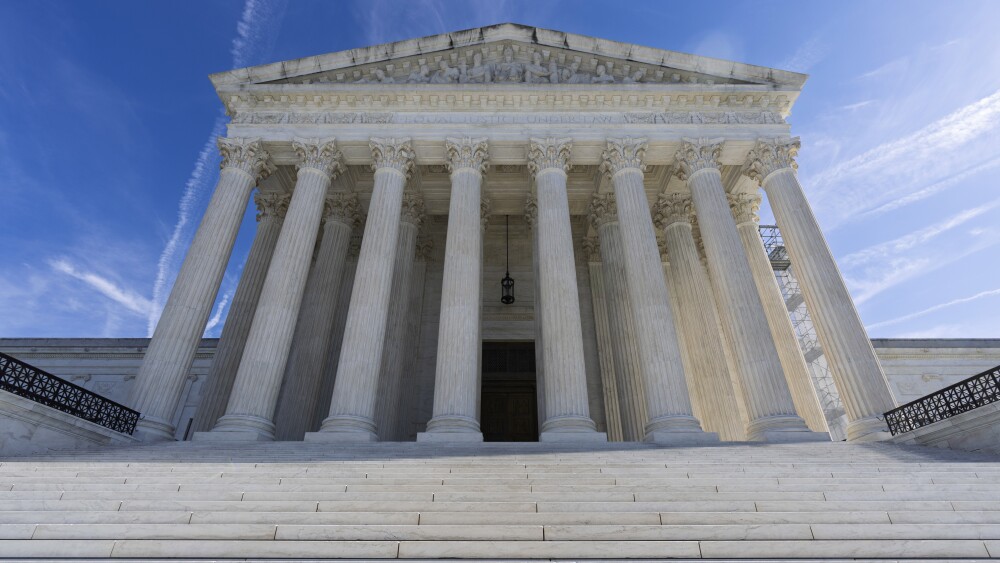Last year’s Supreme Court review focused on cases the Court declined to review and what those denials of certiorari might signal for future cases. This year’s review is mostly about one case pending before the Court.
In October, certiorari was granted in Barnes v. Felix, a case from the Fifth Circuit Court of Appeals focusing on how to evaluate excessive force claims under the Fourth Amendment. The facts of Barnes begin with a car stop and end with the officer shooting and killing the driver. The Court must determine whether the officer’s pre-shooting actions created the necessity for the use of deadly force.
Dashcam video showed that shortly after the driver’s side door opened, Officer Roberto Felix stepped onto the car as the driver, Ashtian Barnes, pulled away. Felix is heard telling Barnes not to move immediately prior to the vehicle moving forward. Officer Felix fired several shots into the car as it accelerated several hundred feet along the shoulder of a busy interstate.
The reasonableness and necessity of Officer Felix’s actions are being questioned by the Barnes’ family who are asking the Supreme Court to overturn the Fifth Circuit. The “moment of the threat doctrine” evaluates the reasonableness of an officer’s actions only in the narrow window when the officer’s safety is threatened. The Fifth Circuit, along with the Second, Fourth and Eighth, use a cabined approach to the Graham v. Connor “totality of the circumstances” reasonableness standard in that they do not base decisions on events preceding the moment of the threat. In contrast, the other eight circuits — the First, Third, Sixth, Seventh, Ninth, Tenth, Eleventh and D.C. Circuits — reject the moment of the threat doctrine and follow the “totality of the circumstances” evaluation, including the officer’s actions leading up to the use of force. This latter review aligns with the “officer created jeopardy” theory at the heart of the petitioner’s claim in Barnes v. Felix.
The Supreme Court has not explicitly ruled in this area. In two prior cases, City and County of San Francisco v. Sheehan, 575 U.S. 600 (2015) and County of Los Angeles v. Mendez, 581 U.S. 420 (2017), the Court left unresolved the issue regarding officer conduct leading to the use of deadly physical force. Barnes v. Felix is a closely watched case that, aside from unifying the circuit court split, potentially will have a significant impact on the use of force training. More to follow as this case progresses toward a final decision.
Second Amendment cases decided
Last year I noted two Second Amendment cases under review that could have important outcomes for police officers and their exposure to gun threats and violence. Both cases, Garland v. Cargill and U.S. v. Rahimi were decided this term.
In Garland, the Court held that a bump stock is not a “machinegun” as defined in 26 USC §5845(b). The bump stock is a modification to a regular rifle stock that when held against the shoulder frees the weapon to slide back and forth quickly by using the force of the kickback against the shooter’s body. It was used in the October 1, 2017, Las Vegas Route 51 Harvest Festival mass shooting where the shooter was able to unleash over 1,000 rounds in 10 minutes.
The Supreme Court’s 6-3 decision held that Alcohol, Tobacco, and Firearms had exceeded its statutory authority by issuing a Rule classifying a bump stock as a “machinegun.”
In U.S. v. Rahimi, the Court held 8-1 that 18 USC §922(g)(8), which prohibits the possession of firearms by persons subject to domestic violence restraining orders, does not violate the Second Amendment. Petitioner, Zackey Rahimi, physically injured his girlfriend during a lunchtime argument, retrieved a gun from his car, and fired a shot at either his fleeing girlfriend or a bystander watching the incident unfold. He later called his girlfriend and threatened to shoot her if she reported the afternoon incident to police. The girlfriend obtained a protective order and the court suspended Rahimi’s gun license. He subsequently violated the order, was arrested for threatening a different woman with a gun and linked by police to five other shootings. Police obtained a warrant to search his residence where they found a rifle, pistol and ammunition. Rahimi was indicted for violating the federal statute.
The Court’s decision said the Second Amendment right to keep and bear arms is fundamental but not unlimited. An individual found by a court to pose a credible threat to the physical safety of another may be temporarily disarmed consistent with Second Amendment principles, the Court held.
Justice Thomas, who authored the Garland majority opinion, was the lone dissent herein and questioned whether the government “can strip the Second Amendment right of any one subject to a protective order—even if he has never been accused or convicted of a crime.” Answering, with “It cannot,” Justice Thomas further wrote that the “Court and Government do not point to a single historical law revoking a citizen’s Second Amendment right based on possible interpersonal violence… in the interest of ensuring the Government can regulate one subset of society, today’s decision puts at risk the Second Amendment rights of many more.” Patrol officers responding to domestic violence calls may respectfully disagree with him on this last case.
As we reflect on the challenges and triumphs of 2024, it’s clear that law enforcement is at a pivotal moment. What’s next for policing in 2025? Dive deeper with our Policing Matters podcast episode, where we break down the hard truths about leadership, technology, mental health and trust — and what every officer needs to know to navigate the road ahead.
Malicious prosecution
Police often arrest individuals for multiple charges. Probable cause for one crime though does not alleviate the requirement that probable cause exists for all crimes charged. By a 6-1 majority, the Court in Chiaverini v. City of Napoleon overturned a Sixth Circuit decision that affirmed a district court’s grant of summary judgment in favor of police officers against a malicious prosecution claim under 42 USC §1983.
The petitioner was arrested for two misdemeanor offenses and a felony money laundering charge. The latter he claimed was based on lies about what he stated to the officers. He was arrested and had property and records seized from his business. The charges were later dismissed, and he initiated a malicious prosecution claim against the officers. Both the district court and Sixth Circuit held that the presence of probable cause for at least one offense negated a malicious prosecution claim. However, the Supreme Court overruled the Sixth Circuit and said that the presence of probable cause is not categorically applied to an arrest.
Justice Kagan wrote that “courts should evaluate suits like Chiaverini’s charge by charge.” Malicious prosecution claims can be sustained if a plaintiff can show an unlawful charge caused them to be arrested without probable cause.
Public nuisance laws
The case City of Grants Pass v. Johnson took aim at anti-camping on public property ordinances. At issue was the City of Grants Pass, Oregon ordinance establishing civil and criminal penalties for camping on public property. The city established anti-camping, anti-sleeping and parking exclusion ordinances to dissuade homeless individuals from residing on its public property. Police officers were authorized to issue written exclusion orders to individuals with two or more violations. A class-action lawsuit on behalf of a representative plaintiff was initiated with the claim being that such ordinances creating civil and criminal penalties were cruel and unusual punishment against the homeless and violated the Eighth Amendment.
It is axiomatic that individuals are not punished in the United States because of their status. In Robinson v. California, 370 U.S. 660 (1962), the Supreme Court said it was unconstitutional to arrest someone for being a drug addict. Criminal law requires an act and accompanying mental state, such as an intent to possess or sell drugs. Five years later in Powell v. Texas, 392 U.S. 514 (1967), the Court said an alcoholic could be arrested for public intoxication because the act of drinking to the point of public intoxication is distinct from being an alcoholic.
The Grants Pass decision similarly distinguished between punishing individual status versus a neutrally applied statute, like public intoxication. Justice Gorsuch’s 6-3 majority opinion held that enforcement of generally applicable laws regulating camping on public property does not constitute “cruel and unusual punishment” prohibited by the Eighth Amendment. He maintained a few key points in doing so:
- The Eighth Amendment’s Cruel and Unusual Punishments Clause historically limited punishments upon conviction, not the behaviors that can be criminalized.
- Robinson v. California was a narrow holding distinguishable from laws prohibiting specific conduct.
- The anti-camping ordinance is neutrally applied, regardless of an individual’s housing status.
As always, officers must remain aware of significant U.S. Supreme Court decisions and how they may impact their enforcement role. These decisions could redefine police procedures, training and community interactions nationwide. Officers and agencies alike must prepare for the ripple effects on daily operations and policy frameworks.



